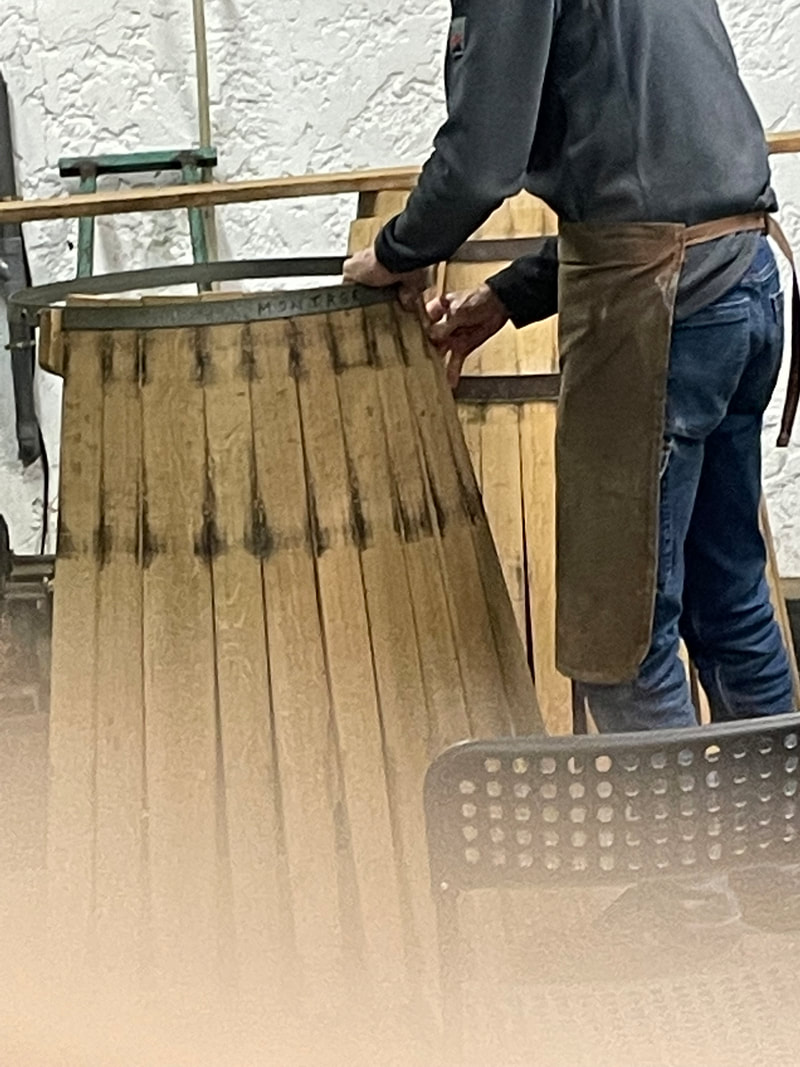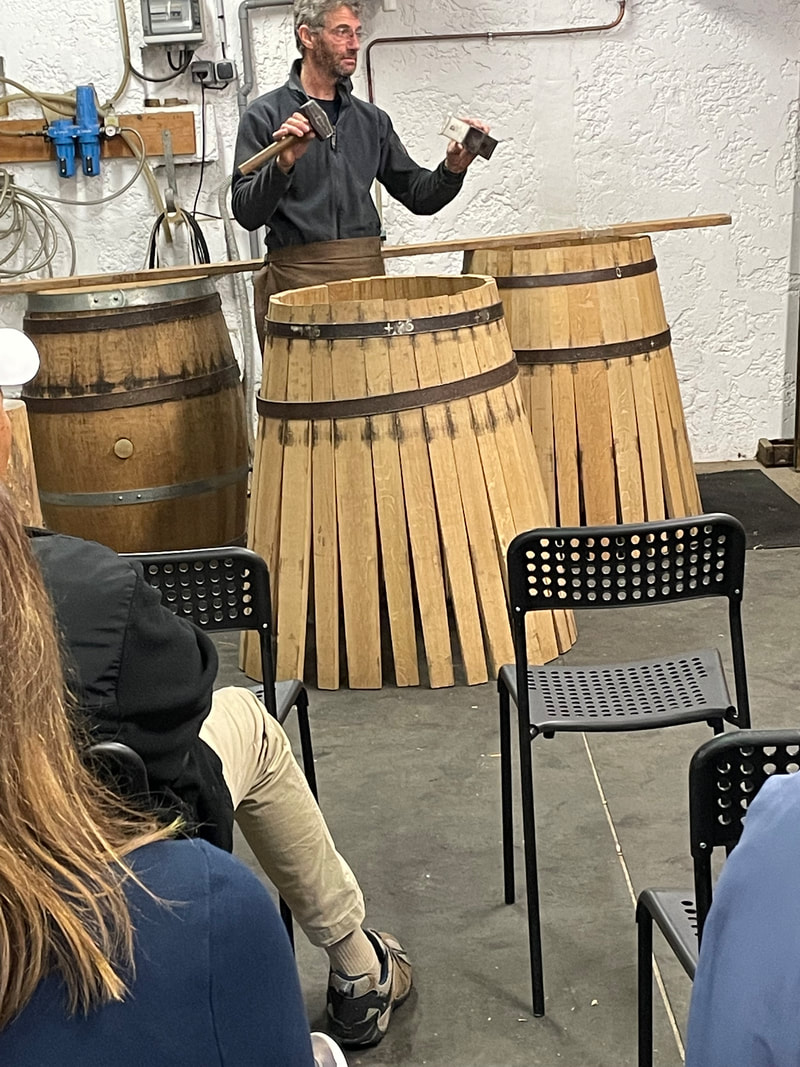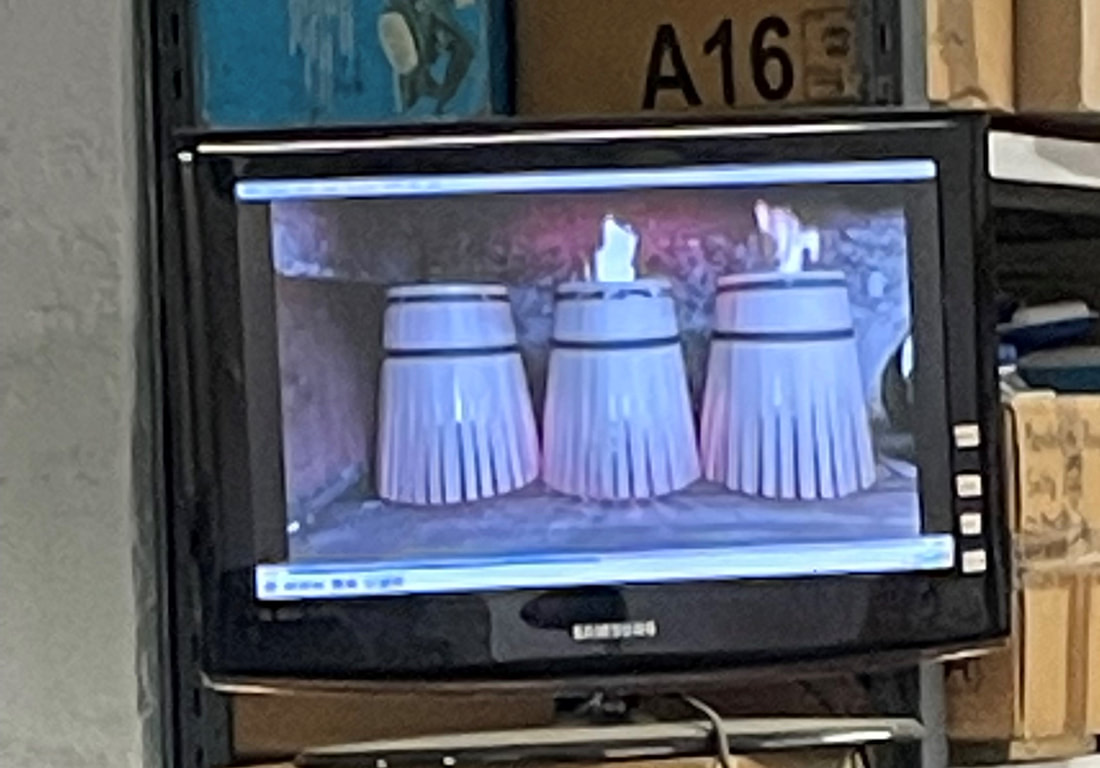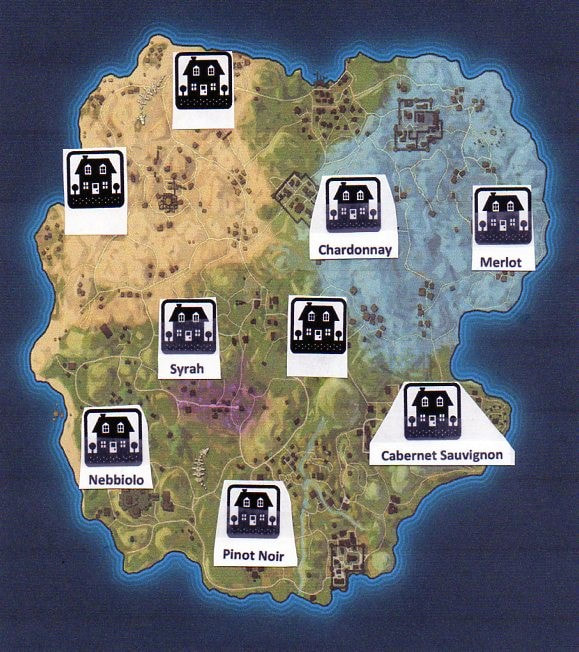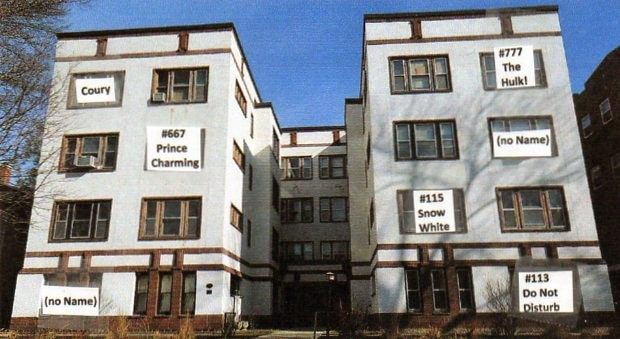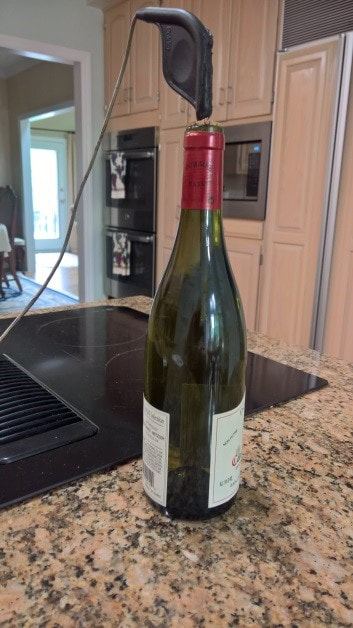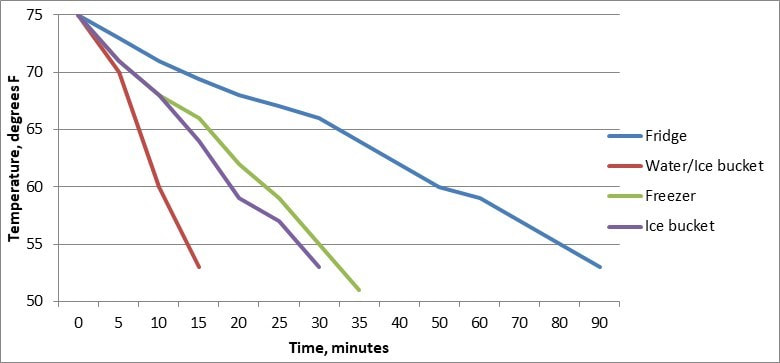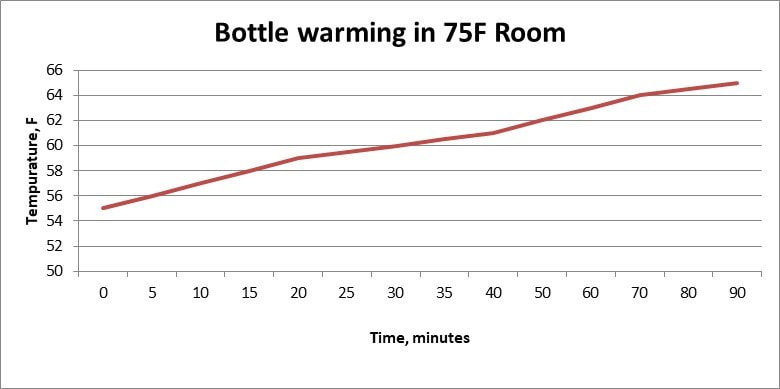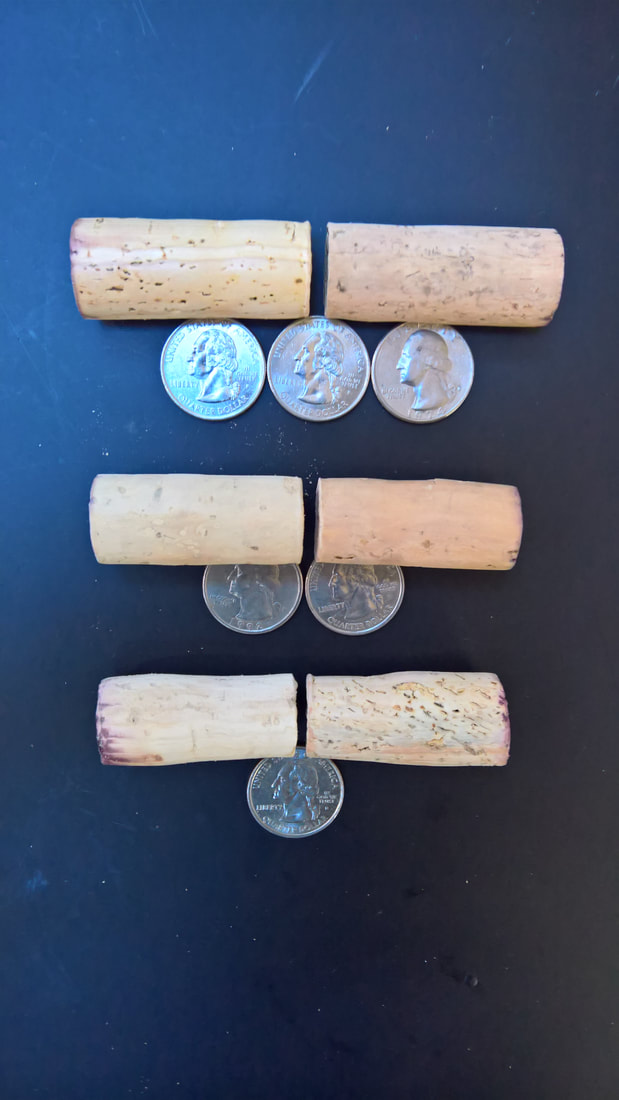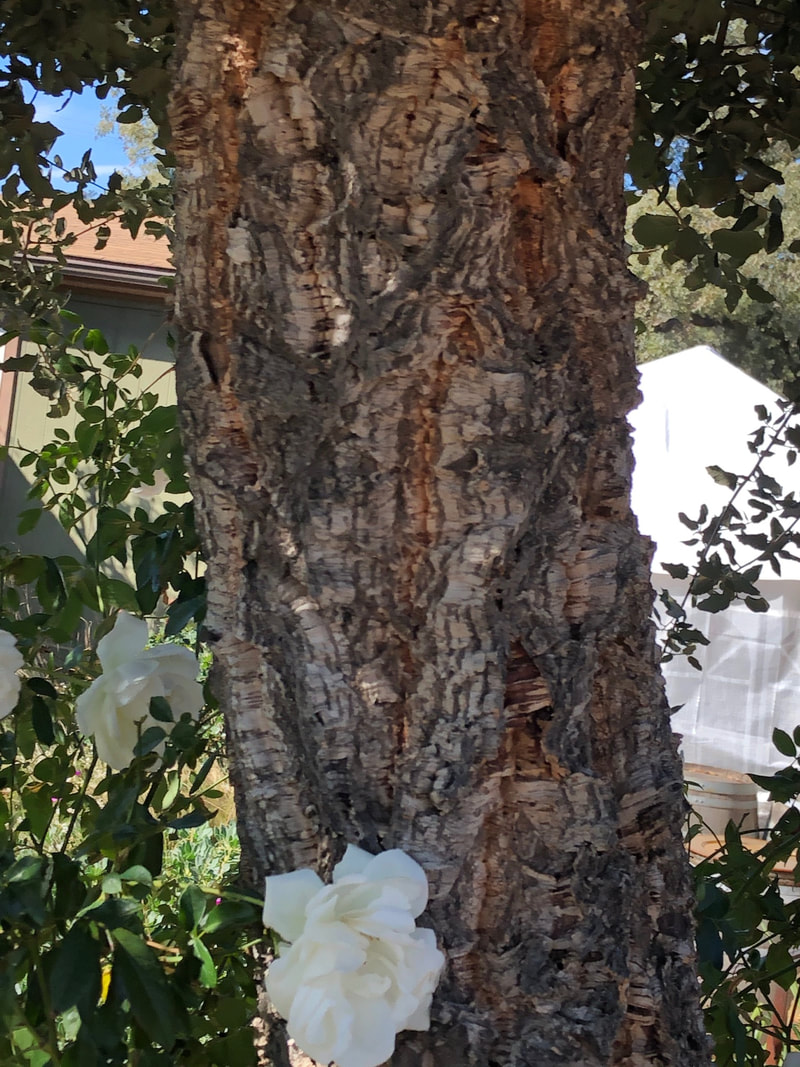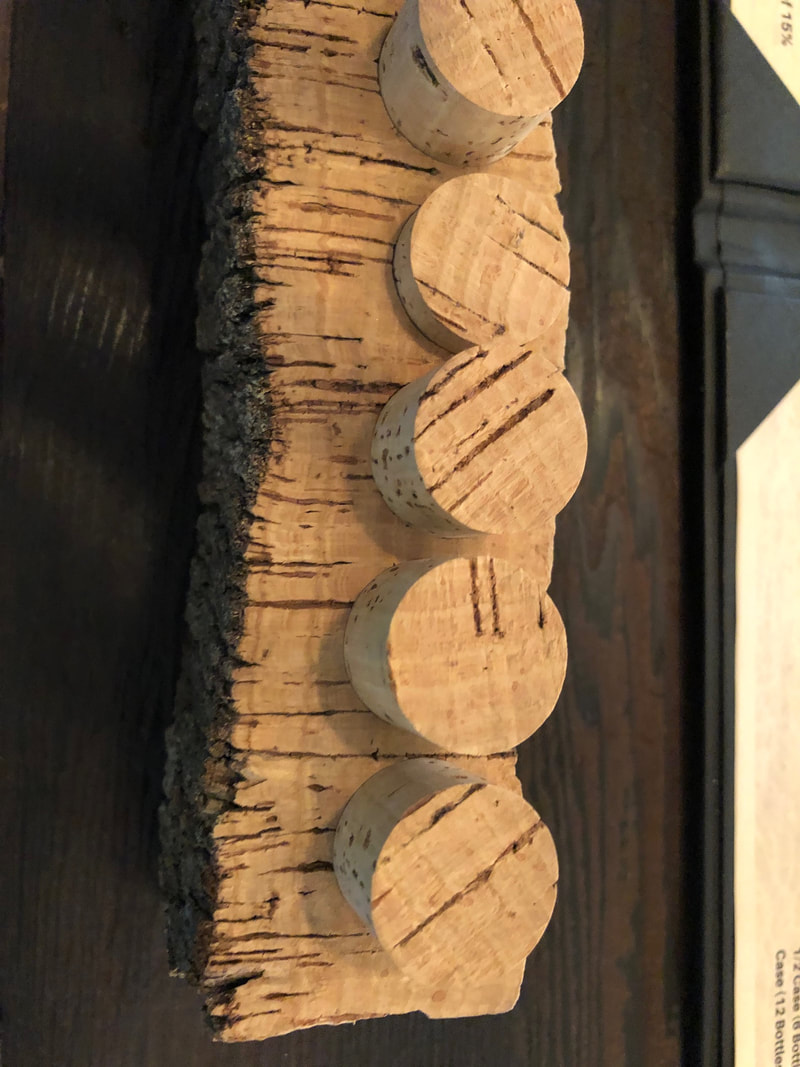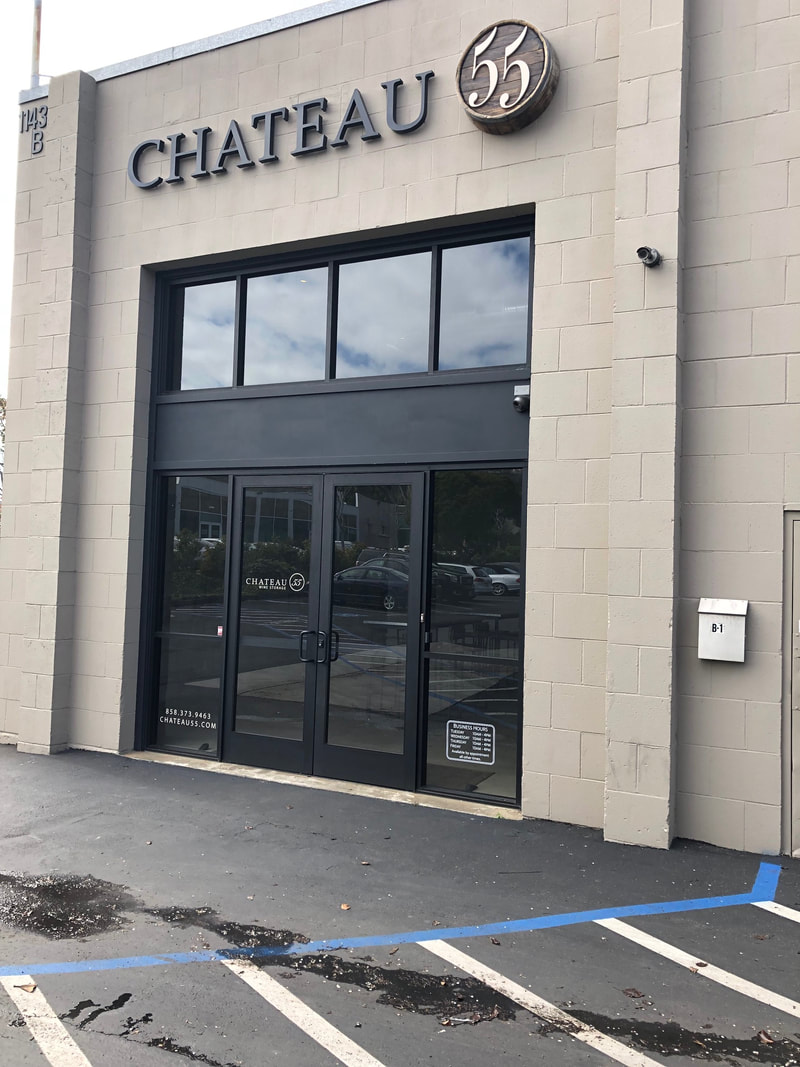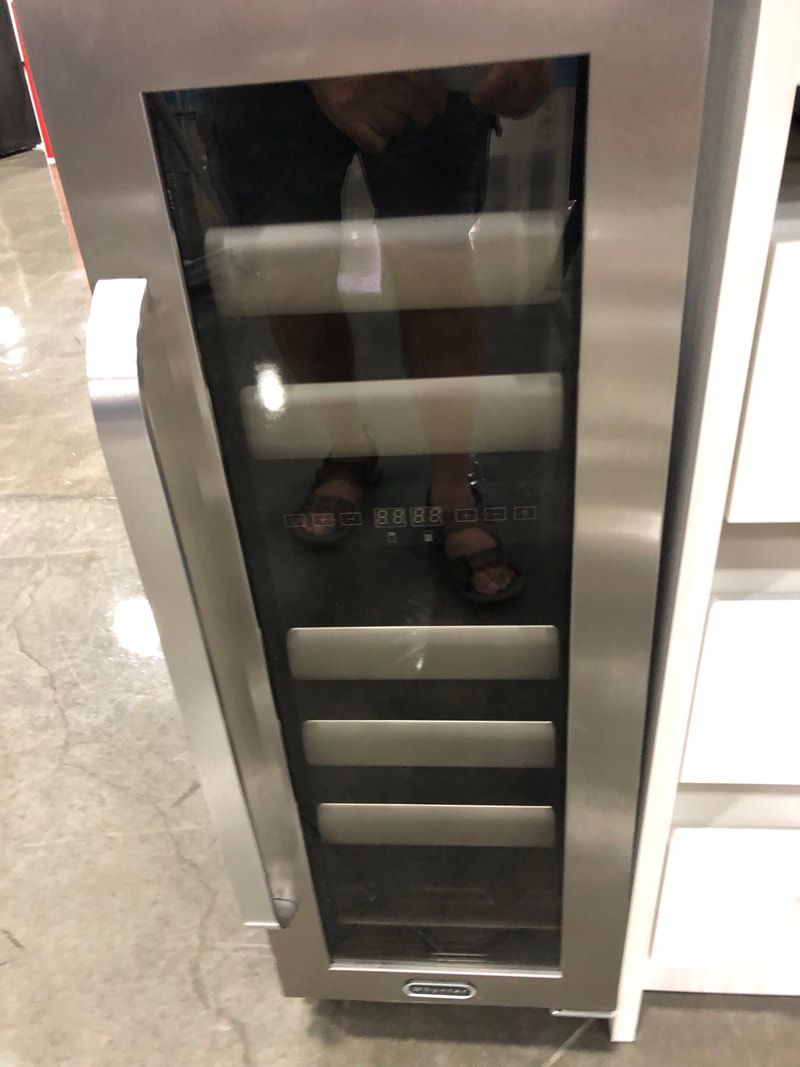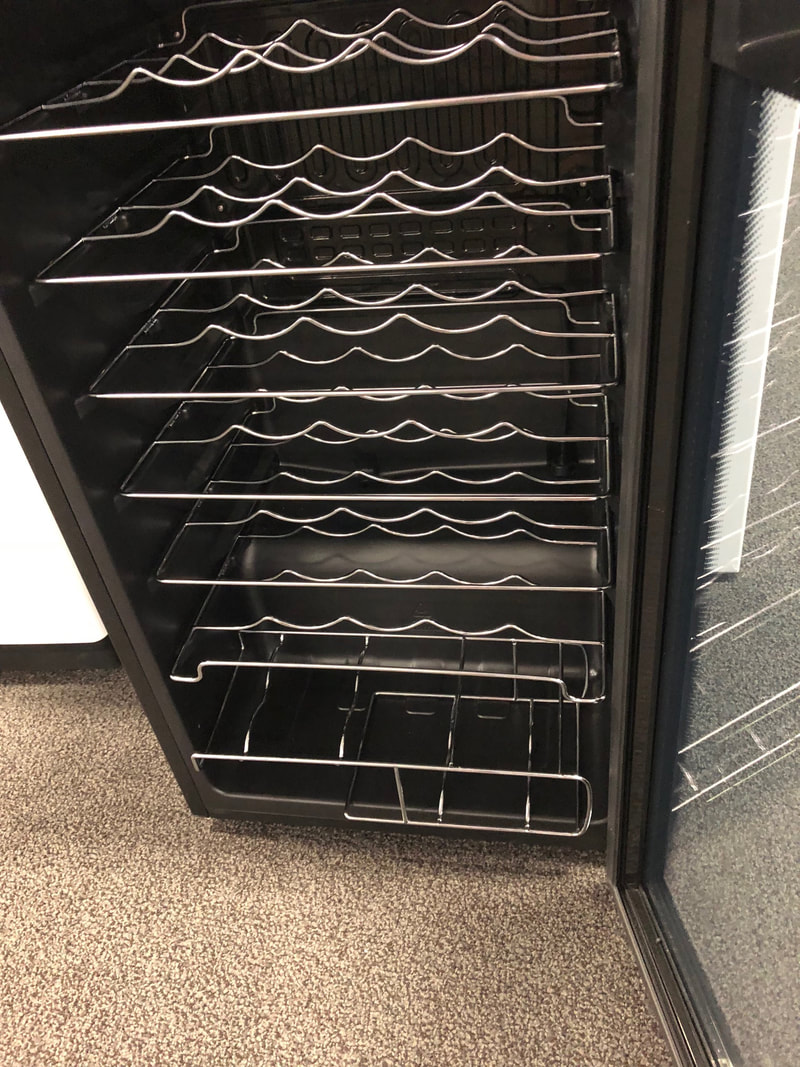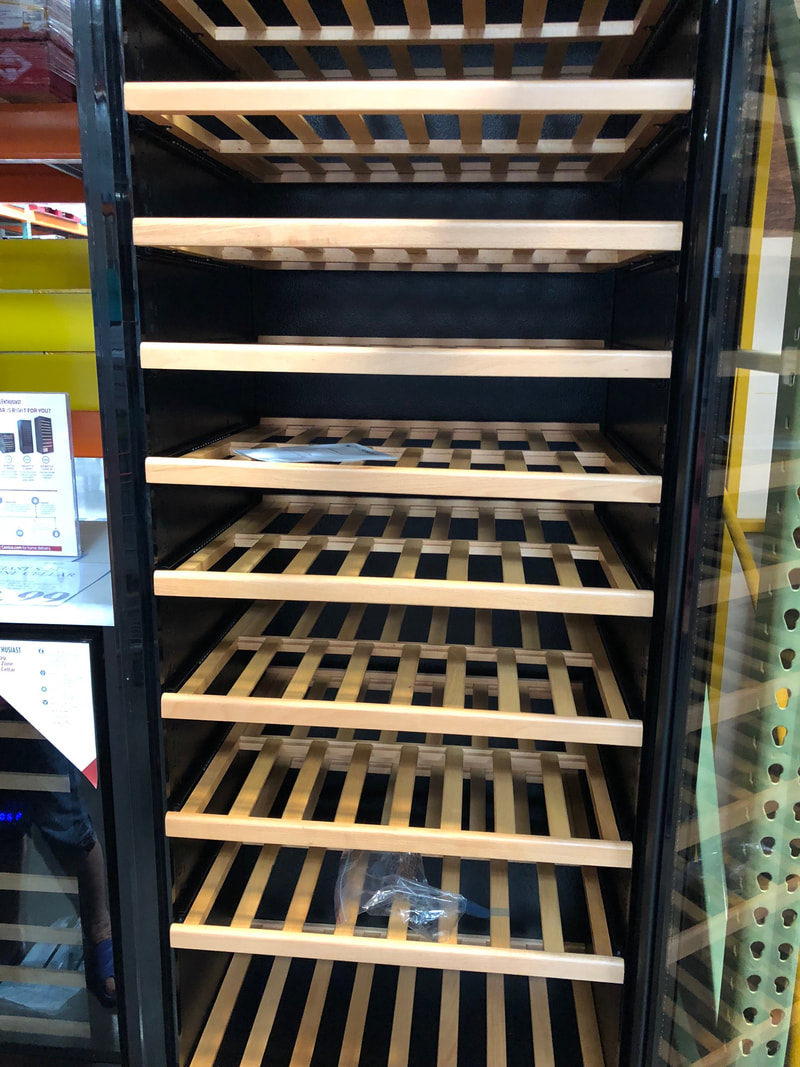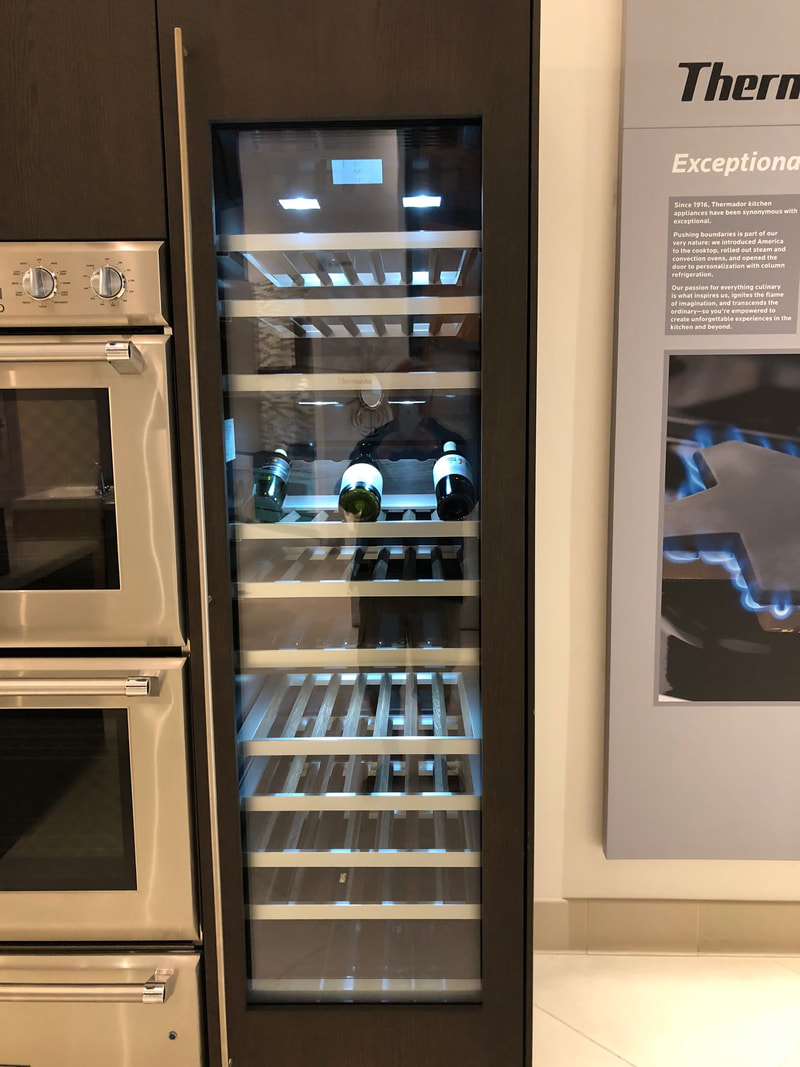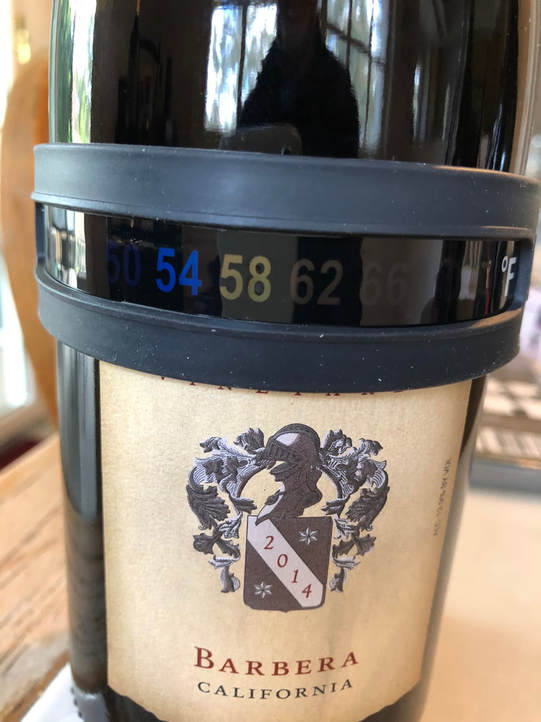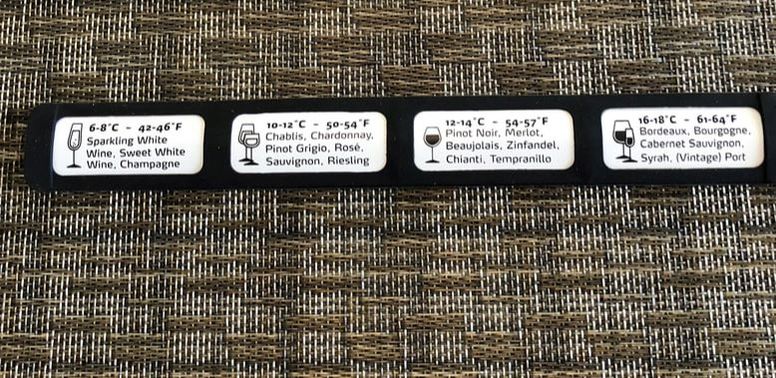About
About this website
Welcome to Southern California Winery Review! I started this website in late 2017 because I kept finding really bad wineries getting rave reviews, while some very, very good wineries were totally ignored. So, I've spent quite a bit of time visiting wineries in Southern California. Of these I've found many pretty good wineries, certainly worth my taking the time to write them up. I know what you are thinking -- it's a dirty job, but someone has to do it.... These are summarized in the Wineries section of this website.
Now wineries in Southern California are rapidly becoming the centers of social activities. Not just for special events (weddings and the like), but as a place to go on weekends with friends, to enjoy good wine (ok, that's pretty obvious), good food, and even good entertainment. While most wineries have some sort of wine club, no two are run the same. Some wineries have restaurants. Some have entertainment on weekends. Some even have hotels -- and pools. So, I have included information on all of this, both in the Wineries section and in the Winery News section.
If you are looking for specific varietals, you can find long lists in the Wineries section following the list of reviewed wineries. Not just what varietals are available in Southern California, but which wineries are offering them. The About section includes info on wine storage, corks, the Sommelier test, how to cool your wine to proper serving temperature, and other little tidbits.
Wine quality determines which wineries I review, though I also pay attention to the wine tasting room, personnel, location, view, et al. I should add that I am very much a red wine enthusiast....
And speaking of red wine, I shall now expound on my pet peeve -- namely, drinking red wine at "room temperature"! Red wine should be stored and drunk at a temperature below 65 F. If you don't believe me, I suggest you run a little experiment -- I like experiments, in fact I'm a retired experimental physicist. Pour red wine into two glasses in a warm room. Chill one to below 65 F (put it in the fridge for about 20 minutes) and let the other glass warm up. Then taste them both....
Links to special blogs:
Welcome to Southern California Winery Review! I started this website in late 2017 because I kept finding really bad wineries getting rave reviews, while some very, very good wineries were totally ignored. So, I've spent quite a bit of time visiting wineries in Southern California. Of these I've found many pretty good wineries, certainly worth my taking the time to write them up. I know what you are thinking -- it's a dirty job, but someone has to do it.... These are summarized in the Wineries section of this website.
Now wineries in Southern California are rapidly becoming the centers of social activities. Not just for special events (weddings and the like), but as a place to go on weekends with friends, to enjoy good wine (ok, that's pretty obvious), good food, and even good entertainment. While most wineries have some sort of wine club, no two are run the same. Some wineries have restaurants. Some have entertainment on weekends. Some even have hotels -- and pools. So, I have included information on all of this, both in the Wineries section and in the Winery News section.
If you are looking for specific varietals, you can find long lists in the Wineries section following the list of reviewed wineries. Not just what varietals are available in Southern California, but which wineries are offering them. The About section includes info on wine storage, corks, the Sommelier test, how to cool your wine to proper serving temperature, and other little tidbits.
Wine quality determines which wineries I review, though I also pay attention to the wine tasting room, personnel, location, view, et al. I should add that I am very much a red wine enthusiast....
And speaking of red wine, I shall now expound on my pet peeve -- namely, drinking red wine at "room temperature"! Red wine should be stored and drunk at a temperature below 65 F. If you don't believe me, I suggest you run a little experiment -- I like experiments, in fact I'm a retired experimental physicist. Pour red wine into two glasses in a warm room. Chill one to below 65 F (put it in the fridge for about 20 minutes) and let the other glass warm up. Then taste them both....
Links to special blogs:
- Moshin Vineyards
- Porter Creek Vineyards
- Jacuzzi Family Vineyards
- Sonoma Barrel Tasting Introduction
- Rare wines offered in So Cal wineries
- Chateau Leoville Poyferre
- Chateau Kirwan
- St. Emilion
- Chateau d'Abzac
- Chateau de Myrat
- Paris
- The Italian Connection
- Purchasing Wine
- Tasting Wine
- Tastes like Marsala
- And the beat goes on
- We are the future
- To taste or not to taste
- Three years
- Doc Ed's Excellent Adventure
- Wine, food, and music in Ramona
- The Guadalupe Valley -- First Visit
- Halloween 2021 -- Revenge of the Spirits
This About section is getting a bit crowded, so I thought it might be worthwhile to list the contents, as follows:
- About this Website
- About Wine Barrels
- About Tannins -- the Good, the Bad, and the Ugly
- About the American Institute of Wine & Food, San Diego Chapter
- About Clones
- About Sommeliers
- About Chilling Wine
- About Southern California Wineries
- About the Lum Eisensan/San Diego Wine Competition
- About Corks
- About Wine Clubs
- About Wine Storage
- About Balsamic Vinegar
About Wine Barrels
First, a bit of history. The Romans were keen to find an alternative to clay amphoras for transporting their wine, and along the way looked at barrels made from palm wood in Mesopotamia. However, palm wood barrels proved too difficult to make, so they were stuck with the clay amphoras – until they encountered the Celts in Gaul (what is now France). They noted that the Celts used oak barrels to transport their beer, so they tried out the oak barrels. Worked great, of course, and somewhere along the line they discovered that the wines tasted better after sitting in the oak barrels for a period of time. Thus began the process of aging wine in oak barrels.
French oak barrels are the most expensive on the market, running from $500 to $1,500 per barrel. When you consider that the barrels are used only two or three times, that is a pretty hefty price. Part of the reason for the high price is that the French only use wood from very old trees, and then only the wood between the roots and the first branches. Oh, and they don’t cut the wood – it is always split to keep the harsher tannins in the oak out of the wine.
The tree is split into wedges, each producing a slat. The slats are aged for two years before being used to make barrels. After aging, the slats are beveled to fit together tight enough to hold water. The pictures below show how the slats are made into a barrel. By the way, I was not in the front row....
First, a bit of history. The Romans were keen to find an alternative to clay amphoras for transporting their wine, and along the way looked at barrels made from palm wood in Mesopotamia. However, palm wood barrels proved too difficult to make, so they were stuck with the clay amphoras – until they encountered the Celts in Gaul (what is now France). They noted that the Celts used oak barrels to transport their beer, so they tried out the oak barrels. Worked great, of course, and somewhere along the line they discovered that the wines tasted better after sitting in the oak barrels for a period of time. Thus began the process of aging wine in oak barrels.
French oak barrels are the most expensive on the market, running from $500 to $1,500 per barrel. When you consider that the barrels are used only two or three times, that is a pretty hefty price. Part of the reason for the high price is that the French only use wood from very old trees, and then only the wood between the roots and the first branches. Oh, and they don’t cut the wood – it is always split to keep the harsher tannins in the oak out of the wine.
The tree is split into wedges, each producing a slat. The slats are aged for two years before being used to make barrels. After aging, the slats are beveled to fit together tight enough to hold water. The pictures below show how the slats are made into a barrel. By the way, I was not in the front row....
After forming the barrel without top or bottom, the inside is fired, the level depending on the desires of the customers. After firing a hole is cut in the side and the top and bottom are installed. No glue is used in the process. Palms are used between top and bottom boards for sealing. The top picture below is a video they showed of roasting the inside of the barrel. The following picture shows the groove cut in the barrel staves to hold the end pieces, and the tool used to push them in place (sticking out the side left side).
Of course, one must then test the barrels for leakage. Some repairs can be done to stop the leaks, but if not the entire barrel is discarded. We asked how often this occurs. The answer: too often. The shop we visited was a three-man operation, and they produced three barrels a day. Someone asked if the owner had any intention of increasing the size of his operation. The answer: an emphatic no.
About Tannins: the Good, the Bad, and the Ugly
By now you are aware that red wines, for the most part, contain tannins, and white wines, for the most part, do not. Now as red wines are fermented with the skins, seeds and sometimes stems, and then placed in oak barrels for an extended period of time, you may assume that the tannins come from the skins, seeds, stems, and maybe the oak, which, in fact, is the case. But, as it turns out, not all tannins are the same. Well, actually, very few are the same…. You see, tannins are a group of long chain polymers, not a single chemical (hence, we talk about tannins, not tannin). Anyway, Daniel Pambianchi wrote a wonderful article for winemakermag.com (Tannin Chemistry) about tannins which is the basis of this work, which I have dubbed “Tannins – the Good, the Bad, and the Ugly”, reflecting the three categories of tannins in the article, but noting that the he does not refer to the third tannin category as the Ugly.
Good tannins are generally extracted from the skins and oak, whereas bad tannins are extracted from the seeds and stems. All tannins make the wine astringent, i.e., dry out the mouth, by reacting with our saliva. However, bad tannins can also react with our bitter taste buds, giving the wine a bitter taste.
OK, so what about the ugly tannins? Well, there are other chemicals in red wine (about 1,000), and one class of these gives the wine its color. These are also long chain polymers called anthocyanins, but I’ll just call them the dyes. Well, as it turns out, these dyes really like tannins, especially the bad tannins, so much so that over time they attach themselves to the bad tannins forming complex tannins. Now I don’t really know if these complex tannins are indeed ugly, but I call them ugly because they get thrown out of the club. That is, they are too heavy to remain in solution so wind up in the sediment. So the wine gets less bitter, but also lighter in color.
But wait, you say – why are the good tannins called good? Well, as it turns out, the good tannins are antioxidants, chemicals that reduce the reaction of oxygen with other chemicals. Of most importance, these good tannins protect the alcohol in the wine, keep it from oxidizing and forming acetaldehyde, a not-so-good tasting chemical. Without the good tannins, the wine could not be aged for any extended time.
Of course, the good tannins need our help. If there is too much oxygen coming into the bottle, or if the oxygen is too chemically active due to higher temperatures, the good tannins will be overcome and the wine will be spoiled. Trial and error over thousands of years have come to the conclusion that the appropriate storage temperature is between 55 and 60 F, i.e., the temperature in most underground storage cellars. Corks have been designed to allow just enough oxygen into the bottle to give it it’s tertiary flavors (caramel, leather, dried fruit, tobacco, et al.) without spoilage assuming that the cork is kept wet and the storage temperature is correct.
So you go to a winery and the wine you taste is awful. How do you know if you are tasting a good wine that has gone bad or just a bad wine? One simple method is to look at the color. The alcohol is not the only chemical in the wine that oxidizes. There are in fact chemicals in the wine that turn brown, giving the wine an orangey appearance. As is turns out, I have come across this problem four or five times at wineries. The amazing thing is that there were many customers tasting these spoiled wines without realizing that they were bad!
One other issue regarding tannins. Tannins are always astringent, but the level depends on the length of the tannins. The longer they are, the softer or silkier the feel in the mouth. Fortunately, tannins grow, both on the vine and in the wine.
So let me summarize: Aging red wine in the right temperature range with a good cork and the bottle on its side results in a smoother, less bitter wine with tertiary aromas and flavors, lighter color, and a bit of color shift to orange. Oh, just in case you were wondering, antioxidants are very good for the human body, so drink red wine with lots of good tannins – such as Tannat, Sagrantino, Xinomaro, and Touriga Nacional….
By now you are aware that red wines, for the most part, contain tannins, and white wines, for the most part, do not. Now as red wines are fermented with the skins, seeds and sometimes stems, and then placed in oak barrels for an extended period of time, you may assume that the tannins come from the skins, seeds, stems, and maybe the oak, which, in fact, is the case. But, as it turns out, not all tannins are the same. Well, actually, very few are the same…. You see, tannins are a group of long chain polymers, not a single chemical (hence, we talk about tannins, not tannin). Anyway, Daniel Pambianchi wrote a wonderful article for winemakermag.com (Tannin Chemistry) about tannins which is the basis of this work, which I have dubbed “Tannins – the Good, the Bad, and the Ugly”, reflecting the three categories of tannins in the article, but noting that the he does not refer to the third tannin category as the Ugly.
Good tannins are generally extracted from the skins and oak, whereas bad tannins are extracted from the seeds and stems. All tannins make the wine astringent, i.e., dry out the mouth, by reacting with our saliva. However, bad tannins can also react with our bitter taste buds, giving the wine a bitter taste.
OK, so what about the ugly tannins? Well, there are other chemicals in red wine (about 1,000), and one class of these gives the wine its color. These are also long chain polymers called anthocyanins, but I’ll just call them the dyes. Well, as it turns out, these dyes really like tannins, especially the bad tannins, so much so that over time they attach themselves to the bad tannins forming complex tannins. Now I don’t really know if these complex tannins are indeed ugly, but I call them ugly because they get thrown out of the club. That is, they are too heavy to remain in solution so wind up in the sediment. So the wine gets less bitter, but also lighter in color.
But wait, you say – why are the good tannins called good? Well, as it turns out, the good tannins are antioxidants, chemicals that reduce the reaction of oxygen with other chemicals. Of most importance, these good tannins protect the alcohol in the wine, keep it from oxidizing and forming acetaldehyde, a not-so-good tasting chemical. Without the good tannins, the wine could not be aged for any extended time.
Of course, the good tannins need our help. If there is too much oxygen coming into the bottle, or if the oxygen is too chemically active due to higher temperatures, the good tannins will be overcome and the wine will be spoiled. Trial and error over thousands of years have come to the conclusion that the appropriate storage temperature is between 55 and 60 F, i.e., the temperature in most underground storage cellars. Corks have been designed to allow just enough oxygen into the bottle to give it it’s tertiary flavors (caramel, leather, dried fruit, tobacco, et al.) without spoilage assuming that the cork is kept wet and the storage temperature is correct.
So you go to a winery and the wine you taste is awful. How do you know if you are tasting a good wine that has gone bad or just a bad wine? One simple method is to look at the color. The alcohol is not the only chemical in the wine that oxidizes. There are in fact chemicals in the wine that turn brown, giving the wine an orangey appearance. As is turns out, I have come across this problem four or five times at wineries. The amazing thing is that there were many customers tasting these spoiled wines without realizing that they were bad!
One other issue regarding tannins. Tannins are always astringent, but the level depends on the length of the tannins. The longer they are, the softer or silkier the feel in the mouth. Fortunately, tannins grow, both on the vine and in the wine.
So let me summarize: Aging red wine in the right temperature range with a good cork and the bottle on its side results in a smoother, less bitter wine with tertiary aromas and flavors, lighter color, and a bit of color shift to orange. Oh, just in case you were wondering, antioxidants are very good for the human body, so drink red wine with lots of good tannins – such as Tannat, Sagrantino, Xinomaro, and Touriga Nacional….
About the American Institute of Wine & Food, San Diego Chapter
My first visit to California wineries was back in 1971, five years before the Paris tasting that put California wines on the map (re: the movie “Bottle Shock” and the book Judgement of Paris). Seven years later, while working at Lawrence Berkeley Laboratory, my wife and I spent many weekends wine tasting in Napa. The first winery we visited was always Robert Mondavi.
Back in those days everyone knew the name Julia Child. Her cook books were in every kitchen, and her show was pretty famous. And that voice…
Anyway, this month I learned that back in 1981 Robert Mondavi joined with Julia Child and others to start an organization called the American Institute of Wine & Food (AIWF), and that they have a San Diego chapter. Said chapter was having its 40th anniversary dinner at the Lodge at Torrey Pines, which, coming in January 2022, puts the San Diego chapter at the beginning of the organization. Which gives you a good idea of how out of touch some people are (me), having lived in San Diego for over 40 years….
As for why the AIWF was formed, I quote from their website:
“The American Institute of Wine & Food is a non-profit organization founded by Julia Child, Robert Mondavi, Richard Graff and others in 1981 to advance the understanding, appreciation and quality of what we eat and drink.”
Now they don’t just sit around, eat, and drink wine (like yours truly). They actually do “advance the understanding, appreciation, and quality of what we eat and drink.” One of their activities is “Days of Taste”. Julia Child started this as a national organization, based on a French program. They bring chef and farmers into 4th and 5th grade classrooms, teaching the children all about food production, nutrition, and the importance of fresh local produce.
Their other key activity is a scholarship program for people interested in becoming chefs, sommeliers, or other professions in the food and wine industry. Scholarships run from $350 to $3,500. Past recipients include Lindsay Pomeroy, San Diego’s WSET Master of Wine (and my WSET level 2 instructor).
Given the above, it was natural that So Cal Winery Review join the organization as a business member. To get to know the AIWF better, Doc Ed and I attended their anniversary dinner. Great food, wine, and, most especially, we got to meet a number of really wonderful, interesting people.
For substantially better information on AIWF, check out the San Diego chapter’s website www.aiwfsandiego.org.
My first visit to California wineries was back in 1971, five years before the Paris tasting that put California wines on the map (re: the movie “Bottle Shock” and the book Judgement of Paris). Seven years later, while working at Lawrence Berkeley Laboratory, my wife and I spent many weekends wine tasting in Napa. The first winery we visited was always Robert Mondavi.
Back in those days everyone knew the name Julia Child. Her cook books were in every kitchen, and her show was pretty famous. And that voice…
Anyway, this month I learned that back in 1981 Robert Mondavi joined with Julia Child and others to start an organization called the American Institute of Wine & Food (AIWF), and that they have a San Diego chapter. Said chapter was having its 40th anniversary dinner at the Lodge at Torrey Pines, which, coming in January 2022, puts the San Diego chapter at the beginning of the organization. Which gives you a good idea of how out of touch some people are (me), having lived in San Diego for over 40 years….
As for why the AIWF was formed, I quote from their website:
“The American Institute of Wine & Food is a non-profit organization founded by Julia Child, Robert Mondavi, Richard Graff and others in 1981 to advance the understanding, appreciation and quality of what we eat and drink.”
Now they don’t just sit around, eat, and drink wine (like yours truly). They actually do “advance the understanding, appreciation, and quality of what we eat and drink.” One of their activities is “Days of Taste”. Julia Child started this as a national organization, based on a French program. They bring chef and farmers into 4th and 5th grade classrooms, teaching the children all about food production, nutrition, and the importance of fresh local produce.
Their other key activity is a scholarship program for people interested in becoming chefs, sommeliers, or other professions in the food and wine industry. Scholarships run from $350 to $3,500. Past recipients include Lindsay Pomeroy, San Diego’s WSET Master of Wine (and my WSET level 2 instructor).
Given the above, it was natural that So Cal Winery Review join the organization as a business member. To get to know the AIWF better, Doc Ed and I attended their anniversary dinner. Great food, wine, and, most especially, we got to meet a number of really wonderful, interesting people.
For substantially better information on AIWF, check out the San Diego chapter’s website www.aiwfsandiego.org.
About Clones
From Doc Ed:
"Over the past several decades, many wine clones have been identified, cataloged, propagated, and used to produce outstanding wines. The University of California (Davis) has been a leader in cataloging the various clones. However, even with all those developments, the concept of wine clones has not penetrated very far into the consuming public. When I talk with people about wine clones, I find confusion and misconceptions. I think people somehow try to relate them to that story of Dolly, the cloned sheep. It is hard to put sheep and wine into the same sentence.
To me, wine made from a clone has very specific characteristics. Of course, the vintner has some influence over the final expression, but I enjoy exploring the clone with predictable personality. Perhaps I can tell you a story that explains the clone concept by way of analogy.
Imagine a small city. Its name is Wine. In this city live many families. All of the family members have the same job. They all make grapes, in their own way. If you think about any mom-and-pop business, you quickly realize that everyone has their unique way of doing their job. The same concept occurs in the city of Wine.
From Doc Ed:
"Over the past several decades, many wine clones have been identified, cataloged, propagated, and used to produce outstanding wines. The University of California (Davis) has been a leader in cataloging the various clones. However, even with all those developments, the concept of wine clones has not penetrated very far into the consuming public. When I talk with people about wine clones, I find confusion and misconceptions. I think people somehow try to relate them to that story of Dolly, the cloned sheep. It is hard to put sheep and wine into the same sentence.
To me, wine made from a clone has very specific characteristics. Of course, the vintner has some influence over the final expression, but I enjoy exploring the clone with predictable personality. Perhaps I can tell you a story that explains the clone concept by way of analogy.
Imagine a small city. Its name is Wine. In this city live many families. All of the family members have the same job. They all make grapes, in their own way. If you think about any mom-and-pop business, you quickly realize that everyone has their unique way of doing their job. The same concept occurs in the city of Wine.
There are several well-known families that live in Wine. Some better-known surnames are Merlot, Syrah, Chardonnay, and Pinot Noir. There is even a new family, Cabernet Sauvignon, which formed four centuries ago with the marriage between the Cabernet Franc and the Sauvignon Blanc families. The grapes produced by the family members of each of these families are unique. Each family’s grape production has identifying characteristics perhaps in color, sugar content, tartness, and specific flavors. For example, none of the grapes from the Merlot family look or taste like the grapes from the Pinot Noir family.
But the differences in grapes aren’t restricted to the family of origin. As an example, let’s look closer at the Pinot Noir family. In their very large house live many people, all of whom are related to each other. They are all Pinot Noir family members. But just like your extended family, each Pinot Noir family member is unique, and they make their grapes every day in a manner consistent with their personalities. I don’t know their names (so I will make some up) but I do know their characteristics and which apartment they live in. There is Snow White, who lives in #Clone 115. She is elegant, sophisticated, and charming but is more involved in the present and doesn’t do great in following through. There is Prince Charming who lives in #Clone 667. He is strong and well-rounded. He can function on his own, but also could benefit from some complimentary companionship. In #Clone 777 lives the Incredible Hulk. Sometimes he is pleasant and well-rounded, and sometimes he is really big and strong. In #Clones 113 and #114 live two recluses. I never see them out on their own. I heard they are shy, and only appear in the company of others, usually #115. There are perhaps a dozen other family members, such as the occupants of the suites named Coury, Wadenswil, and Pommard. Each of these has their unique personalities. And there are many other apartments whose occupants make their grapes every day, but they are nameless and unidentified.
Let’s say that you want to meet the Pinot Noir family. You travel to Wine, and wonder about the best way to know the whole family. One option is to get them all into one room. Can you picture the cacophony of Snow White, some hermits, Prince Charming, the Incredible Hulk and a bunch of unknowns all together? I would suggest taking a bit more time, and meet the family members individually (or at most in small groups) to get a feel for the spectrum of personalities.
I think of Pinot Noir clones as the grapes produced by the individual family members. Each person (clone) produces a Pinot Noir grape that is unique. They are called clones (like Dolly the sheep) because a cutting from #115 planted in one place will be genetically the same (different terroir) as the same clipping planted elsewhere. Each clone has unique flavor characteristics, and some clones do well with limited blending. I tend to get lost and overwhelmed when a vintner mixes the grapes of many clones into one bottle, as I lose the ability to see the individual personalities.
I have two final thoughts about clones. Pinot Noir is not the only family with clones. Syrah from several wineries is occasionally being identified by clone. I think most (maybe all) of the other families also have identified clones (check the UC Davis website), but they are generally not discussed or labeled at the wineries that I visit. My second thought is to remind myself that the analogy of clones and fictional families should not get stretched too far. Analogies can break down if stretched excessively.
I hope you enjoy exploring individual wine clones when they are available. You will get to see the complexity, individuality, and beauty of the grapes, without the need to compare them to sheep."
Let’s say that you want to meet the Pinot Noir family. You travel to Wine, and wonder about the best way to know the whole family. One option is to get them all into one room. Can you picture the cacophony of Snow White, some hermits, Prince Charming, the Incredible Hulk and a bunch of unknowns all together? I would suggest taking a bit more time, and meet the family members individually (or at most in small groups) to get a feel for the spectrum of personalities.
I think of Pinot Noir clones as the grapes produced by the individual family members. Each person (clone) produces a Pinot Noir grape that is unique. They are called clones (like Dolly the sheep) because a cutting from #115 planted in one place will be genetically the same (different terroir) as the same clipping planted elsewhere. Each clone has unique flavor characteristics, and some clones do well with limited blending. I tend to get lost and overwhelmed when a vintner mixes the grapes of many clones into one bottle, as I lose the ability to see the individual personalities.
I have two final thoughts about clones. Pinot Noir is not the only family with clones. Syrah from several wineries is occasionally being identified by clone. I think most (maybe all) of the other families also have identified clones (check the UC Davis website), but they are generally not discussed or labeled at the wineries that I visit. My second thought is to remind myself that the analogy of clones and fictional families should not get stretched too far. Analogies can break down if stretched excessively.
I hope you enjoy exploring individual wine clones when they are available. You will get to see the complexity, individuality, and beauty of the grapes, without the need to compare them to sheep."
About Sommeliers
From Doc Ed:
”I just had a fantastic wine experience, sticking my nose (literally and figuratively) into the sommelier world. Sommeliers are wine experts, and you most likely will encounter them in high-end restaurants recommending wine for your dinner. While I am not looking to go that far into the industry, I did want to improve my wine knowledge and tasting skills. So, I signed up for a class offered by the Court of Master Sommeliers. This organization has four levels of training. I took the first level (Introductory Level). Above that are Certified, Advanced, and Master Sommelier. Of the approximately 130 Master Sommeliers in the world, five taught my class. Before my class, I read two recommended books (over 1200 pages). The class was two days long, with lectures scheduled for ten hours each day. It finished with a very tough multiple-choice exam.
The Master Sommeliers offered great insight into the various grape varieties, where they grow, how climate and soil influence the outcome, fermenting processes, and barrel aging. Best of all, they also taught a process for tasting wine that teaches how to specifically identify the beverage. With recent practice, I now can accurately detect the level of acidity and alcohol in wine. I also can detect and appreciate other characteristics that differentiate similar wines, such as Pinot Noir from Oregon vs California, or Grenache/Syrah blends made in France vs USA.
This course was a lot of work, but it was extremely helpful for me to advance my wine knowledge. If you want further information about the Court of Master Sommelier courses, see their website at https://www.mastersommeliers.org/courses/list.”
From Doc Ed:
”I just had a fantastic wine experience, sticking my nose (literally and figuratively) into the sommelier world. Sommeliers are wine experts, and you most likely will encounter them in high-end restaurants recommending wine for your dinner. While I am not looking to go that far into the industry, I did want to improve my wine knowledge and tasting skills. So, I signed up for a class offered by the Court of Master Sommeliers. This organization has four levels of training. I took the first level (Introductory Level). Above that are Certified, Advanced, and Master Sommelier. Of the approximately 130 Master Sommeliers in the world, five taught my class. Before my class, I read two recommended books (over 1200 pages). The class was two days long, with lectures scheduled for ten hours each day. It finished with a very tough multiple-choice exam.
The Master Sommeliers offered great insight into the various grape varieties, where they grow, how climate and soil influence the outcome, fermenting processes, and barrel aging. Best of all, they also taught a process for tasting wine that teaches how to specifically identify the beverage. With recent practice, I now can accurately detect the level of acidity and alcohol in wine. I also can detect and appreciate other characteristics that differentiate similar wines, such as Pinot Noir from Oregon vs California, or Grenache/Syrah blends made in France vs USA.
This course was a lot of work, but it was extremely helpful for me to advance my wine knowledge. If you want further information about the Court of Master Sommelier courses, see their website at https://www.mastersommeliers.org/courses/list.”
About Chilling Wine
From Doc Ed:
Did you ever have the experience of having a perfect tasting at a vineyard, and bringing a cherished bottle home. You loved the wine flavors at the winery, but a few nights later your newly purchased wine was different from what you remembered Maybe the nose wasn’t as floral, or the finish lacked that crisp sensation. There are several possible reasons, but the most common one is that your wine at home was not served at optimal temperature. Many wineries know that the serving temperature makes a difference. That is why some keep the whole tasting room quite cool, and others use small chillers to store the wine between pours.
How can you bring back those perfect flavors? Try controlling the temperature to maximize the flavor of your wine at home. The best way is to purchase and use a wine refrigerator. You can find a wide variety of sizes online (capacities from as small as six bottles, up to several hundred bottles). I’ve also seen common sized refrigerators at retailers such as Home Depot, Walmart, and Bed, Bath & Beyond. These units keep your wine at your choice of temperature, usually around 55 degrees.
While permanently keeping your favorite wine at a cool temperature will promote longevity and enhance desirable flavors in the wine, you can also quickly chill a bottle at your home using the kitchen refrigerator, freezer, or an ice bucket. These methods are not as good as the dedicated wine fridge, but they certainly provide a cooling method that is far better than serving at room temperature.
In order to help guide you on how to quickly chill a bottle, I did an experiment. Keep in mind it used my kitchen refrigerator, which may be set warmer or cooler than yours. My machine might be more or less efficient than yours, or perhaps differ in other ways. So, my findings should be viewed as guidelines or approximations to get to the desired result.
I started with an empty wine bottle. I filled it with water, and inserted an electronic cooking thermometer to measure the temperature of the liquid (rather than using a device that only measures the exterior temperature of the wine bottle).
From Doc Ed:
Did you ever have the experience of having a perfect tasting at a vineyard, and bringing a cherished bottle home. You loved the wine flavors at the winery, but a few nights later your newly purchased wine was different from what you remembered Maybe the nose wasn’t as floral, or the finish lacked that crisp sensation. There are several possible reasons, but the most common one is that your wine at home was not served at optimal temperature. Many wineries know that the serving temperature makes a difference. That is why some keep the whole tasting room quite cool, and others use small chillers to store the wine between pours.
How can you bring back those perfect flavors? Try controlling the temperature to maximize the flavor of your wine at home. The best way is to purchase and use a wine refrigerator. You can find a wide variety of sizes online (capacities from as small as six bottles, up to several hundred bottles). I’ve also seen common sized refrigerators at retailers such as Home Depot, Walmart, and Bed, Bath & Beyond. These units keep your wine at your choice of temperature, usually around 55 degrees.
While permanently keeping your favorite wine at a cool temperature will promote longevity and enhance desirable flavors in the wine, you can also quickly chill a bottle at your home using the kitchen refrigerator, freezer, or an ice bucket. These methods are not as good as the dedicated wine fridge, but they certainly provide a cooling method that is far better than serving at room temperature.
In order to help guide you on how to quickly chill a bottle, I did an experiment. Keep in mind it used my kitchen refrigerator, which may be set warmer or cooler than yours. My machine might be more or less efficient than yours, or perhaps differ in other ways. So, my findings should be viewed as guidelines or approximations to get to the desired result.
I started with an empty wine bottle. I filled it with water, and inserted an electronic cooking thermometer to measure the temperature of the liquid (rather than using a device that only measures the exterior temperature of the wine bottle).
I tested four cooling methods. I tried putting the bottle on a shelf in the refrigerator, putting it on a shelf in the freezer, putting it into a bucket with only ice cubes as a companion, and filling the bucket with a combination of both ice and cold water. I started each experiment with the bottle contents at 75 degrees. Keeping the thermometer readout outside of the fridge (just like keeping it out of the oven when baking), I was able to leave the bottle undisturbed in the fridge. Then, I measured the temperature readout every few minutes. Here is what I found:
To make it easier to understand, here is the same information in the form of a table, showing how many minutes it takes to lower the temperature to a level suitable for red and white wine.
Number of Minutes Needed to Cool a 750 ml Bottle of Wine
Starting temperature 75 F
Starting temperature 75 F
Cooling Method |
Red (55 F) |
White (52 F) |
Bucket with ice and water |
14 |
16 |
Bucket with ice only |
27 |
31 |
Freezer |
30 |
34 |
Refrigerator |
80 |
92 |
Clearly, using water and ice in a bucket was the fastest. Consider this option when you go to your favorite restaurant and they bring you a warm wine bottle. Ask for a bucket with ice and water, pause you celebration for 14-16 minutes, and then enjoy your purchase. At home, the freezer will cool your bottle in a half hour. Longer waiting times will be needed if you put the wine into the refrigerator section.
I also wondered how long it takes for an unopened bottle to warm up after I take it out of my 55 degree cellar.
I also wondered how long it takes for an unopened bottle to warm up after I take it out of my 55 degree cellar.
I found that a bottle will stay at a reasonable serving temperature (under 60 degrees) up to a half hour after bringing it into a warm room. Of course, now I need to test how fast wine warms up when it has been poured into a glass. That will be a fun experiment!
About Southern California Wineries
Many of the wineries in San Diego County are considered “boutique”. That actually is a legal term defining a type of operating license. The county ordinances passed in 2010 define four types of wineries: wholesale, boutique, small, and large. This ordinance, by allowing the boutique wineries, really opened up the industry in the county, to the extent that there are now over a hundred wineries operating in the county, growth rate is almost 10% per year, and licenses have been issued for many more wineries. So, what do we mean by boutique winery?
According to the county ordinance, a boutique winery must grow at least 25% of the grapes used in their wines. No more than 25% of the grapes can be supplied from outside the county. Annual production is limited to 12,000 gallons. Prepackaged food can be sold at the winery, but no preparation of food is allowed on site except in a licensed food truck. No outside amplifiers, and the limit on outside dining is 20 people. Oh, no weddings or other large events are allowed on the winery site.
Small wineries follow much of the same rules but are allowed to bring in more grapes from outside the county, up to 50% of their total production. Wholesale wineries can’t have a tasting room, but can import 75% of their grapes from outside the county. Boutique wineries are limited to 12,000 gallons per year. The limit for small wineries is ten times larger, 120,000 gallons per year.
The Temecula wine growing region is not in San Diego County, but in Riverside County. Riverside County zoning laws allow very large wineries – in fact, the smallest must have a minimum of 5 acres. Restaurants, hotels, and even golf courses can be part of the winery depending on class (they define six classes). With these much broader laws, and a much earlier start, Temecula grape production is about three times that of San Diego County.
The San Diego Union Tribune article provides some other interesting insight into the relative size of the wine industry in California. Riverside County has 97 wineries and San Diego County 174, so total number in Southern California is 271. By comparison, there are 1616 wineries in Napa, 1270 in Sonoma, 555 in San Luis Obispo, and 456 in Santa Barbara.
About Southern California Wineries
Many of the wineries in San Diego County are considered “boutique”. That actually is a legal term defining a type of operating license. The county ordinances passed in 2010 define four types of wineries: wholesale, boutique, small, and large. This ordinance, by allowing the boutique wineries, really opened up the industry in the county, to the extent that there are now over a hundred wineries operating in the county, growth rate is almost 10% per year, and licenses have been issued for many more wineries. So, what do we mean by boutique winery?
According to the county ordinance, a boutique winery must grow at least 25% of the grapes used in their wines. No more than 25% of the grapes can be supplied from outside the county. Annual production is limited to 12,000 gallons. Prepackaged food can be sold at the winery, but no preparation of food is allowed on site except in a licensed food truck. No outside amplifiers, and the limit on outside dining is 20 people. Oh, no weddings or other large events are allowed on the winery site.
Small wineries follow much of the same rules but are allowed to bring in more grapes from outside the county, up to 50% of their total production. Wholesale wineries can’t have a tasting room, but can import 75% of their grapes from outside the county. Boutique wineries are limited to 12,000 gallons per year. The limit for small wineries is ten times larger, 120,000 gallons per year.
The Temecula wine growing region is not in San Diego County, but in Riverside County. Riverside County zoning laws allow very large wineries – in fact, the smallest must have a minimum of 5 acres. Restaurants, hotels, and even golf courses can be part of the winery depending on class (they define six classes). With these much broader laws, and a much earlier start, Temecula grape production is about three times that of San Diego County.
The San Diego Union Tribune article provides some other interesting insight into the relative size of the wine industry in California. Riverside County has 97 wineries and San Diego County 174, so total number in Southern California is 271. By comparison, there are 1616 wineries in Napa, 1270 in Sonoma, 555 in San Luis Obispo, and 456 in Santa Barbara.
About the Lum Eisensan/San Diego Wine Competition
From Don Bartick, Wine Competition Chairman:
"The Lum competition is for wines made exclusively from San Diego County grapes. The medals are standard awards of Bronze, Silver, Gold and Double Gold. Our panels are made up of 4 judges each. The judges are looking for common characteristics of the varietal they are tasting. They do not swallow the wine, but only smell and swirl the wine to detect the characteristics they're looking for and then spit it out. If the wine is way off, it receives no award. We had a few this year. Each panel member determines the award level. This is parlayed into the average award and that determines the award the winemaker gets. Should all members of the panel determine the wine should receive 'gold', then the winemaker receives a 'Double Gold' for their wine.
The winemaker receives the score sheets from the judges that judged their wine. The score sheet covers the basic characteristics: 'Appearance', 'Aroma& Bouquet', 'Taste and Texture' & 'Finish'. Each of these qualities are commented on in a brief narrative. The judge finishes their thought with 'Opportunities for Improvement'. That how we do it. We do not use a scoring system. All very subjective. That's is why we use judges that are knowledgeable and skilled tasters."
From Don Bartick, Wine Competition Chairman:
"The Lum competition is for wines made exclusively from San Diego County grapes. The medals are standard awards of Bronze, Silver, Gold and Double Gold. Our panels are made up of 4 judges each. The judges are looking for common characteristics of the varietal they are tasting. They do not swallow the wine, but only smell and swirl the wine to detect the characteristics they're looking for and then spit it out. If the wine is way off, it receives no award. We had a few this year. Each panel member determines the award level. This is parlayed into the average award and that determines the award the winemaker gets. Should all members of the panel determine the wine should receive 'gold', then the winemaker receives a 'Double Gold' for their wine.
The winemaker receives the score sheets from the judges that judged their wine. The score sheet covers the basic characteristics: 'Appearance', 'Aroma& Bouquet', 'Taste and Texture' & 'Finish'. Each of these qualities are commented on in a brief narrative. The judge finishes their thought with 'Opportunities for Improvement'. That how we do it. We do not use a scoring system. All very subjective. That's is why we use judges that are knowledgeable and skilled tasters."
About Corks
My wine expert, Doc Ed, wanted to share with you some information about corks. There are different grading systems, but all focus on cork length (standard length is 1 1/2'-1 5/8" and long is around 1 3/4' to 1 7/8') and grain pattern (much grain is poorer quality, minimal grain is better). Better corks (longer, minimal grain) are more expensive, and have been shown to last many years longer than their cheaper alternatives.
Wineries use the better quality corks in bottles they believe have better aging potential. In general, this means better corks are used on higher quality wines.
Below is a photo of three different grades of corks. The lowest quality are placed near the single coin, for size reference. Note the irregular grain pattern, and the irregular cork diameter. The highest grade corks are near the three coins. Note the longer length and smooth grain. In the middle (two coins) are short corks with good grain patterns.
My wine expert, Doc Ed, wanted to share with you some information about corks. There are different grading systems, but all focus on cork length (standard length is 1 1/2'-1 5/8" and long is around 1 3/4' to 1 7/8') and grain pattern (much grain is poorer quality, minimal grain is better). Better corks (longer, minimal grain) are more expensive, and have been shown to last many years longer than their cheaper alternatives.
Wineries use the better quality corks in bottles they believe have better aging potential. In general, this means better corks are used on higher quality wines.
Below is a photo of three different grades of corks. The lowest quality are placed near the single coin, for size reference. Note the irregular grain pattern, and the irregular cork diameter. The highest grade corks are near the three coins. Note the longer length and smooth grain. In the middle (two coins) are short corks with good grain patterns.
Corks are made from the bark of the cork tree, shown below.
As can be seen in the photo below, the best corks are cut from the bark farthest from the edge (left hand side on the picture). The rest of the bark, along with recycled corks, can be used to make composite stoppers made from cork and other materials pressed together. In some cases, these have a short section of good cork attached that serve to reduce air bleed into the wine.
About Wine Clubs
A wine club is basically a contract between you and the winery wherein you agree to buy 12-20 bottles of their wine per year and they in turn give you a 20-30% discount on each bottle. Given that many of the wineries in Southern California do not sell their wines through distributors or to restaurants, this is the best way to get their wines. But we’re not talking about the wineries as just a source of wine. Rather, the wineries have become social gathering spots – in effect the Southern California version of the neighborhood bar – because of their wine clubs!
You see, in addition to getting a discount on wine purchases, the wineries also give you free wine tastings. Wine tastings run from $10-20 per person, allowing 5-6 tastes each around one to two ounces of wine. While it varies from winery to winery, the nominal wine club member gets tastings for two people every time he visits the winery. Let’s say there are two of you, and you visit your favorite winery once a month to pick up your $30 bottle of wine (for which you pay between $21-24), and you do a bit of wine tasting. If you do the math it is easy to see that bottle of wine you are picking up is effectively free. So, you sit drinking a variety of fine wines in a nice to spectacular setting, costing you the same as if you were having drinks in your neighborhood wine bar, but you go home with a nice bottle of wine.
Now, there is one caveat to this equation, namely that you only go home with the wine club required bottle of wine. Sometimes you buy an extra bottle or two -- like I did when I dropped by Orfila to get pictures for my review of their winery. They just had this new wine ....
In addition to the free tastings, wineries offer their club members a variety of other benefits. These include:
Don’t forget to look at the prices. They may be higher than you are willing to pay, even with the discount.
Location is very important, since we are now talking about visiting the winery on a regular basis. Closer is obviously better. The more often you visit the winery, the better the deal. In addition, most wineries have special events that are either limited to wine club members only or wine club members are given priority and/or a discount that you may want to attend.
Look closely at the wine club details. How many bottles a year do you need to purchase? Not every winery operates on a monthly basis. Some are every other month, some skip months, and some operate on a quarterly schedule. Most wineries make accommodations for red wine only tastes, but I don’t think they offer all whites for the white wine enthusiast or all sweet wines for the sweet wine enthusiast (i.e., my sister).
As discussed above, most wineries offer tastings for two every time you visit the winery. That is generally a minimum offering – the wineries want you to bring your friends so they either allow you additional tastings or offer tastings for your guests at a discount.
A wine club is basically a contract between you and the winery wherein you agree to buy 12-20 bottles of their wine per year and they in turn give you a 20-30% discount on each bottle. Given that many of the wineries in Southern California do not sell their wines through distributors or to restaurants, this is the best way to get their wines. But we’re not talking about the wineries as just a source of wine. Rather, the wineries have become social gathering spots – in effect the Southern California version of the neighborhood bar – because of their wine clubs!
You see, in addition to getting a discount on wine purchases, the wineries also give you free wine tastings. Wine tastings run from $10-20 per person, allowing 5-6 tastes each around one to two ounces of wine. While it varies from winery to winery, the nominal wine club member gets tastings for two people every time he visits the winery. Let’s say there are two of you, and you visit your favorite winery once a month to pick up your $30 bottle of wine (for which you pay between $21-24), and you do a bit of wine tasting. If you do the math it is easy to see that bottle of wine you are picking up is effectively free. So, you sit drinking a variety of fine wines in a nice to spectacular setting, costing you the same as if you were having drinks in your neighborhood wine bar, but you go home with a nice bottle of wine.
Now, there is one caveat to this equation, namely that you only go home with the wine club required bottle of wine. Sometimes you buy an extra bottle or two -- like I did when I dropped by Orfila to get pictures for my review of their winery. They just had this new wine ....
In addition to the free tastings, wineries offer their club members a variety of other benefits. These include:
- Many wineries fill their tasting rooms with various wine-related paraphernalia, olive oil, balsamic vinegar (highly recommend), et al. Wine club members get a discount (usually 10%).
- Wineries with restaurants offer wine club members a similar discount and other amenities, such as preferred seating.
- It is not uncommon for the larger wineries to have special areas for wine club members only, sometimes with extra goodies such as munchies or music, always with places to sit down.
- If the winery has a hotel (yes, you heard me, a hotel), wine club members get a discount on the hotel rooms and other costs.
- Many wineries hold wine-club-only events, such as wine pick-up parties.
Don’t forget to look at the prices. They may be higher than you are willing to pay, even with the discount.
Location is very important, since we are now talking about visiting the winery on a regular basis. Closer is obviously better. The more often you visit the winery, the better the deal. In addition, most wineries have special events that are either limited to wine club members only or wine club members are given priority and/or a discount that you may want to attend.
Look closely at the wine club details. How many bottles a year do you need to purchase? Not every winery operates on a monthly basis. Some are every other month, some skip months, and some operate on a quarterly schedule. Most wineries make accommodations for red wine only tastes, but I don’t think they offer all whites for the white wine enthusiast or all sweet wines for the sweet wine enthusiast (i.e., my sister).
As discussed above, most wineries offer tastings for two every time you visit the winery. That is generally a minimum offering – the wineries want you to bring your friends so they either allow you additional tastings or offer tastings for your guests at a discount.
About wine storage
If you join a wine club, you may want to take a serious look at where to store your wine. I got a very good lesson on what happens to wine if it isn’t properly stored. Our friend, Doc Ed, level 1 Sommelier and wine expert, has been joining us in visits to wineries. We visited a winery that also served lunch, so we ordered our food and then started in on some wine tasting. The first pours looked a bit strange – the wine had an orangey appearance. It also did not taste very well. Same thing for our second pour. After the second pour, our wine expert asked the wine server if they stored their wines on site. He said yes, they did, in a temperature controlled room -- at 74 F. When we got back to our table to eat lunch, he pointed out that the orangey coloration and the bad taste of the wine is due to oxidation – which occurs because they store the wine at too high of a temperature.
Cellars are very rare in Southern California so you’ll need some other way to store your wine. Fortunately, I have a couple of solutions. You can purchase a wine chiller – a refrigerator designed to hold wine bottles and keep them at a temperature between 55 and 65 F. More on these below. Then there are commercial wine storage businesses that will store your wine for you. To this end, I have good news if you live in San Diego: you can get a significant savings by storing your wine at Chateau 55, a new facility on Sorrento Valley Road. By mentioning this website when you sign up, you get one free month of rental and a 5% discount for the next 11 months. See link below:
They offer both full lockers and community lockers to hold your wine. The upstairs lockers are the smallest full lockers with 13 cubic feet of storage space, enough to hold around 8 cases of wine. They run $19.50 per month. The lower level lockers are larger (18 cubic feet, enough to hold 12 cases of wine) and run $36 per month. If you rent a full locker you get a fob that allows you access to your wine on evenings and weekends.
For the community locker option, you pay between $4 and $5 per case per month, ideal if you are looking to store less than 4 to 5 cases of wine. However, the community locker option does not come with a fob, so you can only access your wine during working hours.
What about wine shipments, you say? I mean, wouldn’t it be nice if my wine clubs could just ship the wine directly to Chateau 55? The answer is yes, they can. In fact, if you leave them a key, they’ll just put your wine in your locker.
I have an arrangement with Chateau 55 to make it a bit more appealing to try them out. Chateau 55 will give visitors to this website a free month’s rental and a 5% discount for their first year of storage. I like numbers, so here they are:
Without discount, ground level storage locker for one year: $432.00
Savings from free month and 5% discount for first year: $ 55.80
Discounted first year cost for ground level storage locker: $376.20
That’s an ~13% discount. If you go with an upstairs storage locker, the first year total is $203.78, saving you over $30 dollars or ~13%. In comparison, you will probably pay $1,500 or more for a wine refrigerator to hold that much wine, you will need a dedicated electrical service for the unit, and you’ll need a place to put it. In addition to the high cost of large wine refrigerators, the electricity cost is not insignificant, especially if it puts you into a higher usage bracket.
As a final note on Chateau 55, they have some tables in their lobby and a conference room off to the side with a conference table. Over time they plan on turning this front into a nice place to drop by, visit your wine, and maybe spend time hanging out with other wine enthusiasts.
If you join a wine club, you may want to take a serious look at where to store your wine. I got a very good lesson on what happens to wine if it isn’t properly stored. Our friend, Doc Ed, level 1 Sommelier and wine expert, has been joining us in visits to wineries. We visited a winery that also served lunch, so we ordered our food and then started in on some wine tasting. The first pours looked a bit strange – the wine had an orangey appearance. It also did not taste very well. Same thing for our second pour. After the second pour, our wine expert asked the wine server if they stored their wines on site. He said yes, they did, in a temperature controlled room -- at 74 F. When we got back to our table to eat lunch, he pointed out that the orangey coloration and the bad taste of the wine is due to oxidation – which occurs because they store the wine at too high of a temperature.
Cellars are very rare in Southern California so you’ll need some other way to store your wine. Fortunately, I have a couple of solutions. You can purchase a wine chiller – a refrigerator designed to hold wine bottles and keep them at a temperature between 55 and 65 F. More on these below. Then there are commercial wine storage businesses that will store your wine for you. To this end, I have good news if you live in San Diego: you can get a significant savings by storing your wine at Chateau 55, a new facility on Sorrento Valley Road. By mentioning this website when you sign up, you get one free month of rental and a 5% discount for the next 11 months. See link below:
They offer both full lockers and community lockers to hold your wine. The upstairs lockers are the smallest full lockers with 13 cubic feet of storage space, enough to hold around 8 cases of wine. They run $19.50 per month. The lower level lockers are larger (18 cubic feet, enough to hold 12 cases of wine) and run $36 per month. If you rent a full locker you get a fob that allows you access to your wine on evenings and weekends.
For the community locker option, you pay between $4 and $5 per case per month, ideal if you are looking to store less than 4 to 5 cases of wine. However, the community locker option does not come with a fob, so you can only access your wine during working hours.
What about wine shipments, you say? I mean, wouldn’t it be nice if my wine clubs could just ship the wine directly to Chateau 55? The answer is yes, they can. In fact, if you leave them a key, they’ll just put your wine in your locker.
I have an arrangement with Chateau 55 to make it a bit more appealing to try them out. Chateau 55 will give visitors to this website a free month’s rental and a 5% discount for their first year of storage. I like numbers, so here they are:
Without discount, ground level storage locker for one year: $432.00
Savings from free month and 5% discount for first year: $ 55.80
Discounted first year cost for ground level storage locker: $376.20
That’s an ~13% discount. If you go with an upstairs storage locker, the first year total is $203.78, saving you over $30 dollars or ~13%. In comparison, you will probably pay $1,500 or more for a wine refrigerator to hold that much wine, you will need a dedicated electrical service for the unit, and you’ll need a place to put it. In addition to the high cost of large wine refrigerators, the electricity cost is not insignificant, especially if it puts you into a higher usage bracket.
As a final note on Chateau 55, they have some tables in their lobby and a conference room off to the side with a conference table. Over time they plan on turning this front into a nice place to drop by, visit your wine, and maybe spend time hanging out with other wine enthusiasts.
If you want to go with a wine refrigerator, be aware of the fact that most of the people who make wine chillers are idiots. Well, ok, maybe that’s a bit over the top. But most if not all of the chillers assume that all wine bottles are Bordeaux size, just under 3 inches in diameter, that this is some kind of standard bottle size. It is not. 3 3/8” diameter bottles are common – pretty much the standard for Pinot Noir (made popular by the movie “Sideways”). Our chiller can only handle these larger diameter bottles by putting them in backwards, as shown in the picture below.
To help you along with finding a chiller that can hold the larger bottles, I dropped into Fry’s, Best Buy, and CostCo to look at their wine chillers. Fry’s has a wide assortment of chillers, but only one on the floor (shown below). It is small but can hold Pinot Noir-sized bottles. Best Buy’s only floor unit is much larger – it can hold 34 bottles – and is actually cheaper. While the rack-to-rack spacing is marginal for the larger bottles, the racks are not rigidly held so one should be able to store them with ease. See picture below.
CostCo had five units on the floor, but only one (shown below) could hold the larger bottles. It holds a lot of bottles – three hundred! – but if you want to really get into wine in a big way...
Pirch has wine storage cabinets, some of which are attached to a refrigerator. The one shown below made by Thermdor is a stand-alone unit that handles bottles of all sizes.

So the question arises: how do I know that my wine is the right temperature, especially if I’ve pulled my wine out of the chiller? Well, there is a device that measures the temperature of your bottle. Called a Snap Thermometer (see picture on left), it actually snaps onto your bottle and reads the temperature. Oh, and should you not know what temperature to serve your wine at they tell you on the back. Pictures follow.
OK, so now you know what temperature your wine should be when you drink it. However, when you go to your favorite restaurant they serve you red wine at room temperature. What do you do? Dr. Ed adds ice to the wine. While it may dilute the wine somewhat, we believe it is still better than drinking wine at too high of a temperature.
How much ice, you ask? Well, using the temperature strip shown above, I put six ounces of tap water in a wine glass. The initial reading was 72 F. I then added one standard refrigerator ice cube. The temperature fell to below 66 F in four minutes. All of the ice melted at the six minute mark, at which time I added a second ice cube. In another four minutes the temperatures reached 58 F, and wound up at between 54 and 58 F when the ice finally melted after about nine minutes.
How much ice, you ask? Well, using the temperature strip shown above, I put six ounces of tap water in a wine glass. The initial reading was 72 F. I then added one standard refrigerator ice cube. The temperature fell to below 66 F in four minutes. All of the ice melted at the six minute mark, at which time I added a second ice cube. In another four minutes the temperatures reached 58 F, and wound up at between 54 and 58 F when the ice finally melted after about nine minutes.
About balsamic vinegar
Not surprisingly, many of the wineries I have reviewed sell balsamic vinegar as well as wine. Some do not make it themselves, or even have it made from their wine, but they do sell it. I originally thought I would add a review of the balsamic vinegar offered at the wineries as an added service to those visiting my site, but it is not as easy to evaluate balsamic vinegar as it is wine. OK, to be fair, that’s just me – I have tried and failed miserably to evaluate a balsamic vinegar just by tasting it. I have to have it on a salad because that is why I buy it in the first place. Yes, I’ve been told that a really good balsamic wine vinegar is great on ice cream, but really, ice cream? I mean, why would good ice cream need balsamic wine vinegar? And if the ice cream isn’t very good does it make sense to improve it with balsamic vinegar, which, by the way, is not cheap?
But, you say, I’ve tried balsamic vinegar salad dressings in restaurants and they aren’t that good. Ah, but have you made it yourself, tried it on your salads at home? If not, then let me tell you how to make a great salad dressing using balsamic vinegar.
There are only five important ingredients to a great balsamic vinegar salad dressing – balsamic vinegar, olive oil, oregano, basil, and garlic. Pretty simple. Here are a few tips:
· Consider using light olive oil. Save the good virgin olive oil for other recipes where it will not be overwhelmed by balsamic vinegar.
· Garlic powder works fine.
· Fresh basil is great, but the dried stuff works as well. The amount of basil you use depends a bit on what you put in the salad. In particular, basil goes extremely well with tomatoes.
· Dress the salad. The problem with any oil/vinegar salad dressing is that the two do not mix, so if you make the dressing on the side some people will get all oil and others all vinegar.
· One thing the oil does for you is cut the sour taste of the ascetic acid in the vinegar. Balsamic vinegar is made by aging wine vinegar. As it ages, the ascetic acid level goes down and the vinegar gets sweeter and heavier. Hence, the thicker the balsamic vinegar the less oil you need to add to your salad dressing. For a wine vinegar dressing a ratio of 3 to 1 oil to vinegar works well; for a heavy balsamic vinegar dressing I like a 1 to 3 ratio.
· I used to add the oil first, but my wife pointed out that you really want the balsamic vinegar to soak into the vegetables, not the oil. So we now add the balsamic vinegar first.
· Balsamic vinegar is pretty strong stuff, so drizzle it on the salad.
Our standard salad at home is pretty simple – cucumbers, lettuce and related greens, carrots, avocado (Hass are best), and tomatoes (Heirloom if you can get them). You can also use the balsamic dressing to make a Sicilian salad – tomatoes, cucumbers and red onions. I don’t like raw onions, so we don’t put them in any of our salads. We will add avocado, though, so I guess we don’t make a true Sicilian salad.
The dressing can also be used to make Caprese. Start with some good tomatoes, sliced and laid out on a platter. Top with a leaf or two of basil and a slice of fresh mozzarella. Make the dressing without basil and drizzle onto the layered structure just before serving. Unless, like me, you really like the dressing soaked into the tomatoes, in which case drizzle the dressing on the tomatoes before adding the basil and mozzarella.
Oh, as per every other recipe, add salt and pepper to taste.
Not surprisingly, many of the wineries I have reviewed sell balsamic vinegar as well as wine. Some do not make it themselves, or even have it made from their wine, but they do sell it. I originally thought I would add a review of the balsamic vinegar offered at the wineries as an added service to those visiting my site, but it is not as easy to evaluate balsamic vinegar as it is wine. OK, to be fair, that’s just me – I have tried and failed miserably to evaluate a balsamic vinegar just by tasting it. I have to have it on a salad because that is why I buy it in the first place. Yes, I’ve been told that a really good balsamic wine vinegar is great on ice cream, but really, ice cream? I mean, why would good ice cream need balsamic wine vinegar? And if the ice cream isn’t very good does it make sense to improve it with balsamic vinegar, which, by the way, is not cheap?
But, you say, I’ve tried balsamic vinegar salad dressings in restaurants and they aren’t that good. Ah, but have you made it yourself, tried it on your salads at home? If not, then let me tell you how to make a great salad dressing using balsamic vinegar.
There are only five important ingredients to a great balsamic vinegar salad dressing – balsamic vinegar, olive oil, oregano, basil, and garlic. Pretty simple. Here are a few tips:
· Consider using light olive oil. Save the good virgin olive oil for other recipes where it will not be overwhelmed by balsamic vinegar.
· Garlic powder works fine.
· Fresh basil is great, but the dried stuff works as well. The amount of basil you use depends a bit on what you put in the salad. In particular, basil goes extremely well with tomatoes.
· Dress the salad. The problem with any oil/vinegar salad dressing is that the two do not mix, so if you make the dressing on the side some people will get all oil and others all vinegar.
· One thing the oil does for you is cut the sour taste of the ascetic acid in the vinegar. Balsamic vinegar is made by aging wine vinegar. As it ages, the ascetic acid level goes down and the vinegar gets sweeter and heavier. Hence, the thicker the balsamic vinegar the less oil you need to add to your salad dressing. For a wine vinegar dressing a ratio of 3 to 1 oil to vinegar works well; for a heavy balsamic vinegar dressing I like a 1 to 3 ratio.
· I used to add the oil first, but my wife pointed out that you really want the balsamic vinegar to soak into the vegetables, not the oil. So we now add the balsamic vinegar first.
· Balsamic vinegar is pretty strong stuff, so drizzle it on the salad.
Our standard salad at home is pretty simple – cucumbers, lettuce and related greens, carrots, avocado (Hass are best), and tomatoes (Heirloom if you can get them). You can also use the balsamic dressing to make a Sicilian salad – tomatoes, cucumbers and red onions. I don’t like raw onions, so we don’t put them in any of our salads. We will add avocado, though, so I guess we don’t make a true Sicilian salad.
The dressing can also be used to make Caprese. Start with some good tomatoes, sliced and laid out on a platter. Top with a leaf or two of basil and a slice of fresh mozzarella. Make the dressing without basil and drizzle onto the layered structure just before serving. Unless, like me, you really like the dressing soaked into the tomatoes, in which case drizzle the dressing on the tomatoes before adding the basil and mozzarella.
Oh, as per every other recipe, add salt and pepper to taste.
